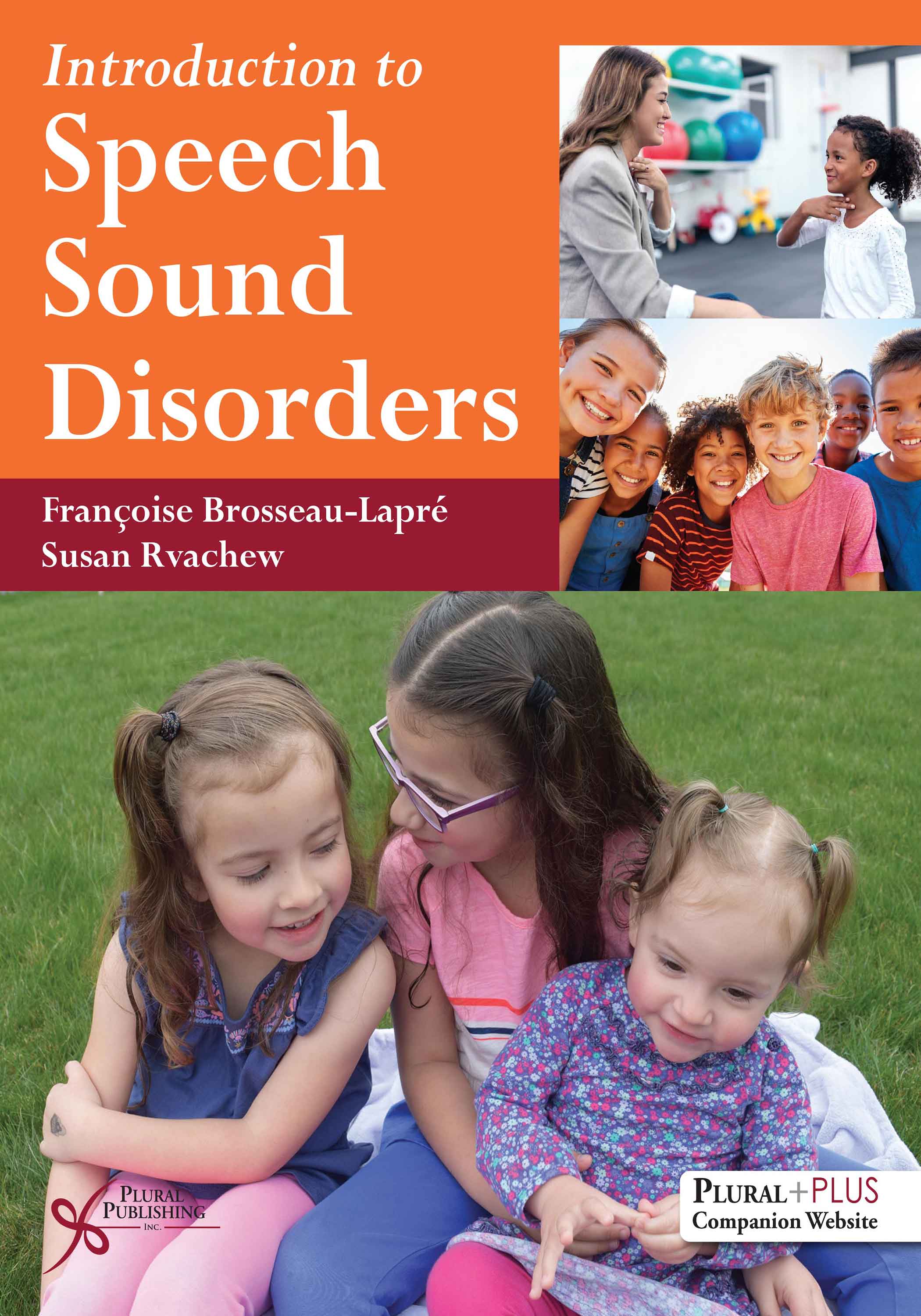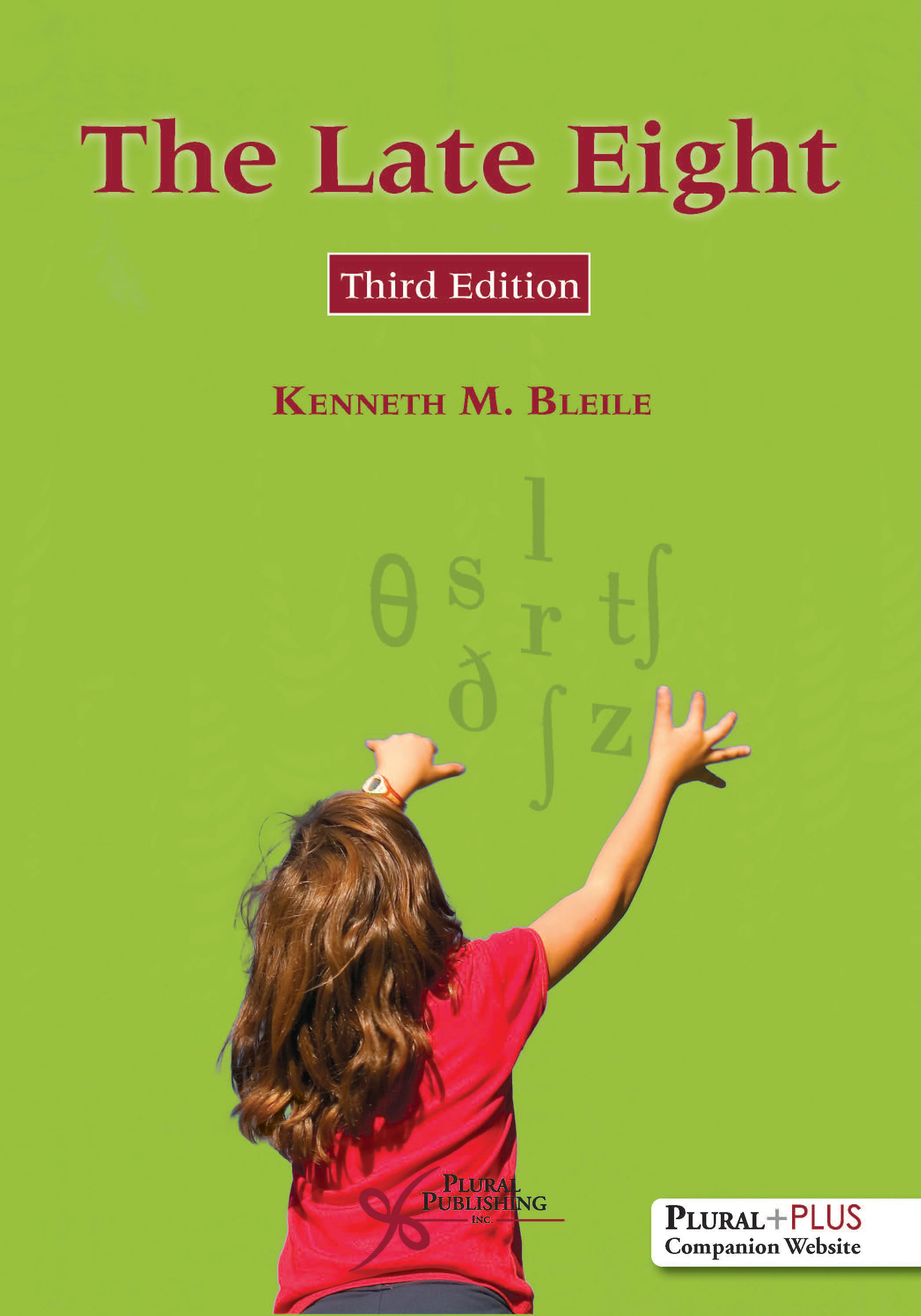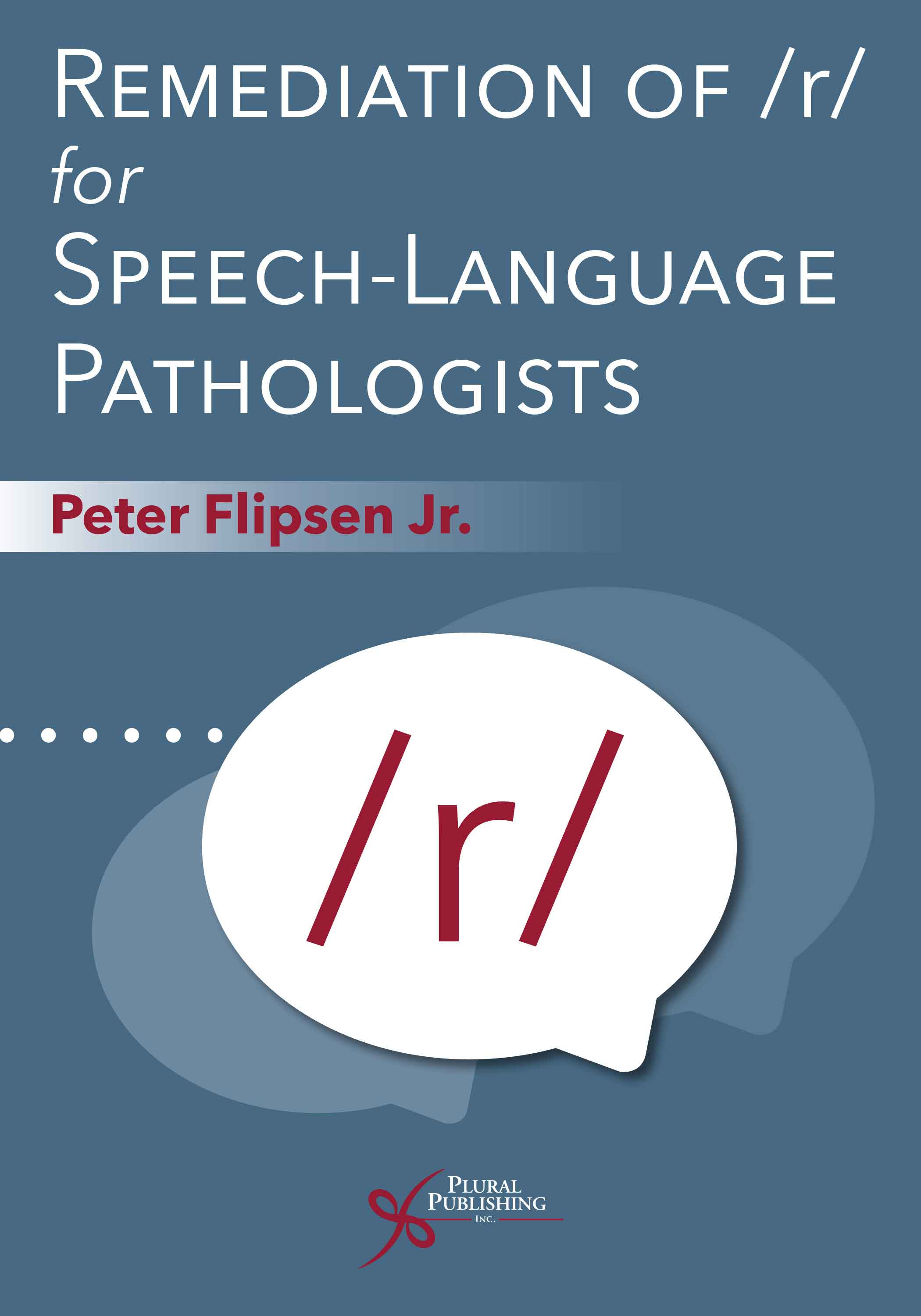
Developmental Phonological Disorders: Foundations of Clinical Practice
Second Edition
Susan Rvachew, Françoise Brosseau-Lapré
Details: 624 pages, B&W, Softcover, 8.5" x 11"
ISBN13: 978-1-59756-717-6
© 2018 | Available
For Instructors
Purchase
Developmental Phonological Disorders: Foundations of Clinical Practice, Second Edition is the only graduate-level textbook designed for a competency-based approach to teaching, learning, and assessment. The book provides a deep review of the knowledge base necessary for the competent assessment, diagnosis, and treatment of developmental phonological disorders. Thoroughly revised and updated, the textbook contains learning objectives in each chapter to further support understanding of concepts and carefully designed case studies and demonstrations to promote application to clinical problem solving.
Key Features
- Learning objectives for each chapter subsection
- Includes the "how, why, and when" to apply each assessment and treatment procedure in clinical practice
- 62 tables containing clinically relevant information such as normative data to interpret phonological assessment results
- 99 figures to support clinical decision making such as recommending a treatment delivery model, selecting treatment targets, or choosing evidence-based interventions
- 35 case studies to support a competency-based approach to teaching and assessment
- 35 demonstrations that show how to implement assessment and treatment procedures
The second edition provides a comprehensive overview of seminal studies and leading-edge research on both phonological development and phonological disorders, including motor speech disorders and emergent literacy. This wealth of theoretical background is integrated with detailed descriptions and demonstrations of clinical practice, allowing the speech-language pathologist to design interventions that are adapted to the unique needs of each child while being consistent with the best research evidence.
New to the Second Edition
- Updated and expanded section on childhood apraxia of speech
- Updated and expanded sections on the identification and treatment of inconsistent phonological disorder
- Administration and interpretation of the Syllable Repetition Task added
- Administration and interpretation of the Diagnostic Evaluation of Articulation and Phonology added with case studies and demonstrations
- New organization, formatting, and editing to reduce the size of the book
- Case studies revised to a single-page format
- Improved Table of Contents to ease access to content, including norms tables, case studies, and demonstrations
Reviews
"They have reviewed research from outside fields (e.g., genetics, sociolinguistics, and neurolinguistics) to expand the knowledge base of speech-language pathologists. Each chapter is very well organized, beginning with learning objectives that are clearly met as one reads the chapter. The chapters on development (speech perception, speech motor control, and phonological) are more comprehensive than most other graduate level texts, providing a valuable resource for both faculty and students, most especially doctoral level students. Rvachew's and Brosseau-Lapre's approach to diagnosis and treatment planning is remarkably comprehensive. They provide valuable information in their tables and figures to support practitioners and the case studies and demonstrations are extremely helpful in applying the research base. . . . In summary, this is an exceptionally useful addition to the body of knowledge regarding articulation and phonology. Rvachew and Brosseau-Lapre present perhaps the most solidly research-based text available and supplement their comprehensive overview of the research literature with practical information that can be easily incorporated into masters' and doctoral level education. The practical information will be valuable to practicing clinicians who turn to the text for up-to-date research and application information. . . . I believe it is an exceptionally useful addition to the profession and I am most appreciative of Rvachew's and Brosseau-Lapre's work to update their work."
—Lissa Power-deFur, Ph.D., CCC-SLP, ASHA-F, Professor, Communication Sciences and Disorders Director, Longwood's Speech, Hearing, and Learning Services, Longwood University (March 2017)
"The authors in my opinion have hit a home run."
—Dennis M. Ruscello, Ph.D. FASHA, Professor of Communication Sciences and Disorders, Adjunct Professor of Otolaryngology, West Virginia University, Morgantown, WV (May 2017)
Foreword
Preface
Acknowledgments
Part I. Phonology from a Developmental Perspective
Chapter 1. Describing Phonological Knowledge at Multiple Levels of Representation
1.1 Types of Phonological Knowledge
1.2 Describing Articulatory Knowledge
1.3 Describing Perceptual Knowledge
1.4 Describing Phonological Knowledge
1.5 References
Chapter 2. Speech Perception Development
2.1 Assessment of Speech Perception Skills in Infancy
2.2 Speech Perception Development in Infancy
2.3 Speech Perception Development in Childhood
2.4 Mechanisms That Underlie Speech Perception Development
2.5 References
Chapter 3. Development of Speech Motor Control
3.1 Acoustic and Kinematic Studies of Speech Development
3.2 Theories of Speech Motor Control
3.3 Factors That Contribute to the Development of Speech Motor Control
3.4 References
Chapter 4. Phonological Development
4.1 Normal Phonological Development
4.2 Emerging Phonological Knowledge in Infants and Toddlers
4.3 Normative Data: Preschool and School-Age Children
4.4 Theoretical Issues in Phonological Development
4.5 Environmental Influences and Physiological Constraints on Phonological Development
4.6 References
Part II. A Holistic Approach to Diagnosis and Treatment Planning
Chapter 5. Assessment of Children with Developmental Phonological Disorders
5.1 Planning the Assessment
5.2 Obligatory Assessment Tools and Procedures
5.3 Optional Assessment Tools and Procedures
5.4 Considerations for Dialect Speakers, Children Speaking English as a Second Language, and Multilingual Children
5.5 Putting It All Together
5.6 References
Chapter 6. Speech Sample Analysis
6.1 Analyses to Select Treatment Goals
6.2 Analyses to Track Treatment Progress
6.3 Predictive Assessment Procedures
6.4 References
Chapter 7. Nature of Developmental Phonological Disorders
7.1 Classification of Developmental Phonological Disorders
7.2 Linguistic Classification Systems
7.3 Shriberg's Framework for Research in Speech Sound Disorders
7.4 Psycholinguistic Approach to the Description of DPD
7.5 Prevalence, Comorbidity, and Long-Term Outcomes
7.6 References
Chapter 8. Treatment Planning
8.1 Deciding Whether to Provide an Intervention
8.2 Service Delivery Options
8.3 Treatment Planning for the Individual Child
8.4 References
Part III. Intervention at Multiple Levels of Representation
Chapter 9. Input-Oriented Intervention Procedures
9.1 Focused Stimulation
9.2 Ear Training
9.3 Dialogic Reading
9.4 Conclusions and Recommendations
9.5 References
Chapter 10. Output-Oriented Intervention Procedures
10.1 Explore Possibilities of the Vocal System
10.2 Controlled Variability in Babble and Early Words
10.3 Intelligible Speech
10.4 Ongoing Refinements Toward Adultlike Speech
10.5 Conclusions and Recommendations
10.6 References
Chapter 11. Phonological Intervention Procedures
11.1 Word-Based Phonology
11.2 Emergence and Reorganization of Phonological Structure
11.3 Explicit Access to Phonological Structure
11.4 Conclusions and Recommendations
11.5 References
List of Illustration Legends, Figures, Tables, Case Studies, and Demonstrations
Index
CASES STUDIES:
Case Study 1-1. Allophonic Rule Produced by Child with Chronic Otitis Media
Case Study 1-2. Covert Contrast Produced by a Preschooler
Case Study 1-3. Unique Error Pattern for Fricatives in Onset Versus Ambisyllabic and Coda Position
Case Study 4-1. Using Normative Data to Determine if a 24-Month-Old Child Has Delayed Speech Development
Case Study 4-2. Productions of the Words “clock” and “clocks” by One Child in a Study of Cluster Development
Case Study 4-3. Speech Data from a Male Preschooler
Case Study 5-1A. DEAP Articulation Assessment Responses
Case Study 5-1B. Oral Motor Screening
Case Study 5-1C. DEAP Diagnostic Screen Responses and Phonology Assessment Results
Case Study 5-1D. Performance on Measures of Phonological Processing
Case Study 5-1E. Assessment Report
Case Study 6-1A. Speech Sample Obtained from Dwight with the HAPP-3
Case Study 6-1B. Comparison of Phonological Pattern versus Quick Multilinear Analysis for Dwight’s Sample
Case Study 6-2A. Amber’s Single Word Sample Organized for Multilinear Phonology Analysis
Case Study 6-2B. Steps 1 and 2 of Complete Multilinear Analysis: Syllable/Word Shape and Segment Inventories
Case Study 6-2C. Completed SODA Analysis Form for Amber’s Speech Sample
Case Study 6-2D. Feature Trees Derived from Amber's Sample
Case Study 6-2E. Summary of Findings: Multilinear Phonology Analysis of Amber's Sample
Case Study 6-3. Phonetic and Phonotactic Analysis of Speech Sample Produced by Toddler
Case Study 6-4. Using pMLU to Track Improvements in Early Phonological Development
Case Study 6-5. Change is Indexed by WSSA Score When GFTA Score is Stable
Case Study 6-6. Predictive Assessment Protocol for Sibilant Distortions
Case Study 7-1. Assessment Results Characteristic of Inconsistent Deviant Phonological Disorder
Case Study 7-2. Assessment Results Characteristic of Motor Speech Disorder
Case Study 8-1. Example of Speech Delay and Dyslexia Profile
Case Study 8-2. Risks of Phoneme Specific Eligibility Criteria
Case Study 8-3. Speech Errors Not Requiring Treatment
Case Study 8-4. Example of Phonological Disorder Profile
Case Study 9-1. Focused Stimulation Targeting /l/ Phoneme
Case Study 9-2. Focused Stimulation by Parent in Home Environment
Case Study 9-3. Use of SAILS to Improve Speech Perception and Production Accuracy
Case Study 9-4. Live Voice Error Detection as part of an Input Oriented Intervention
Case Study 10-1. A Late Talking Toddler Responds to Vocal Play Intervention
Case Study 10-2. Case Study and Demonstration of Sensorimotor Lesson Plan
Case Study 11-1. Selected Speech Sample Data from a Candidate for Core Vocabulary Intervention

Introduction to Speech Sound Disorders
First Edition
Françoise Brosseau-Lapré, Susan Rvachew
Details: 295 pages, 2-Color, Softcover, 7" x 10"
ISBN13: 978-1-59756-803-6
© 2020 | Available

Phonological Treatment of Speech Sound Disorders in Children: A Practical Guide
First Edition
Jacqueline Bauman-Waengler, Diane Garcia
Details: 316 pages, B&W, Softcover, 8.5" x 11"
ISBN13: 978-1-63550-027-1
© 2019 | Available

The Late Eight
Third Edition
Ken M. Bleile
Details: 467 pages, B&W, Softcover, 7" x 10"
ISBN13: 978-1-94488-303-4
© 2018 | Available

Speech Sound Disorders in Children in Honor of Lawrence D. Shriberg
First Edition
Rhea Paul, Peter Flipsen Jr.
Details: 280 pages, B&W, Softcover, 7" x 10"
ISBN13: 978-1-59756-249-2
© 2010 | Available

Speech Sounds: A Pictorial Guide to Typical and Atypical Speech
First Edition
Sharynne McLeod, Sadanand Singh
Details: 395 pages, B&W, Softcover, 8.5" x 11"
ISBN13: 978-1-59756-106-8
© 2009 | Available

Seeing Speech: A Quick Guide to Speech Sounds
First Edition
Sharynne McLeod, Sadanand Singh
Details: 40 pages, Spiral Bound, 5.5" x 8.5"
ISBN13: 978-1-59756-322-2
© 2009 | Available

Remediation of /r/ for Speech-Language Pathologists
First Edition
Peter Flipsen Jr.
Details: 228 pages, B&W, Softcover, 7" x 10"
ISBN13: 978-1-63550-287-9
© 2022 | Available

Speech Sound Disorders: For Class and Clinic
Fifth Edition
Ken M. Bleile
Details: 495 pages, B&W, Softcover, 7" x 10"
ISBN13: 978-1-63550-662-4
© 2025 | Available

Handbook on Children's Speech: Development, Disorders, and Variations
First Edition
Raymond D. Kent
Details: 495 pages, B&W, Hardcover, 7" x 10"
ISBN13: 978-1-63550-620-4
© 2024 | Available


